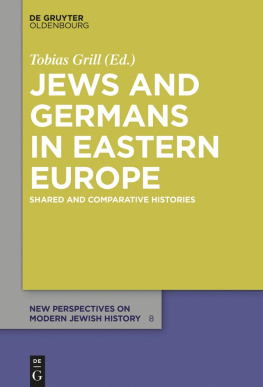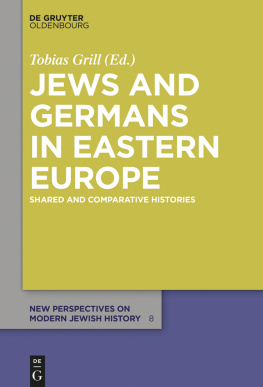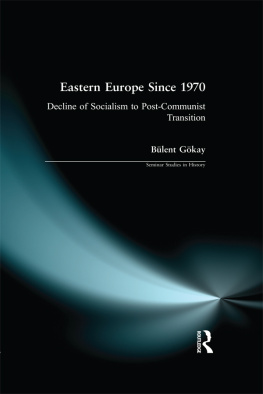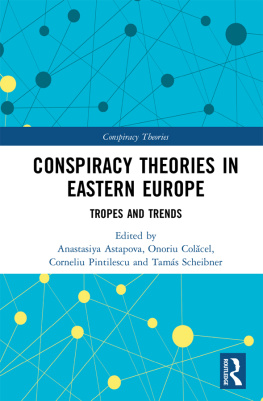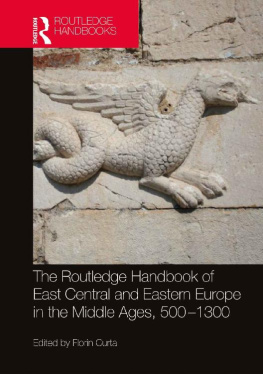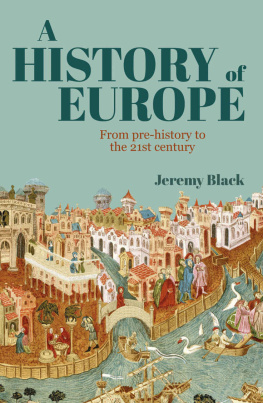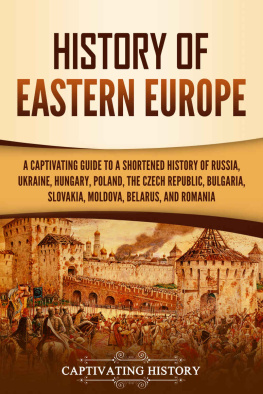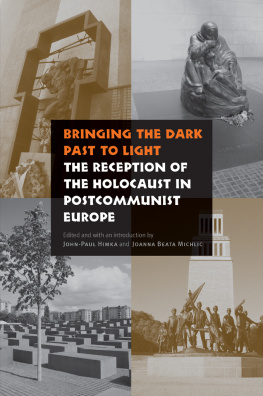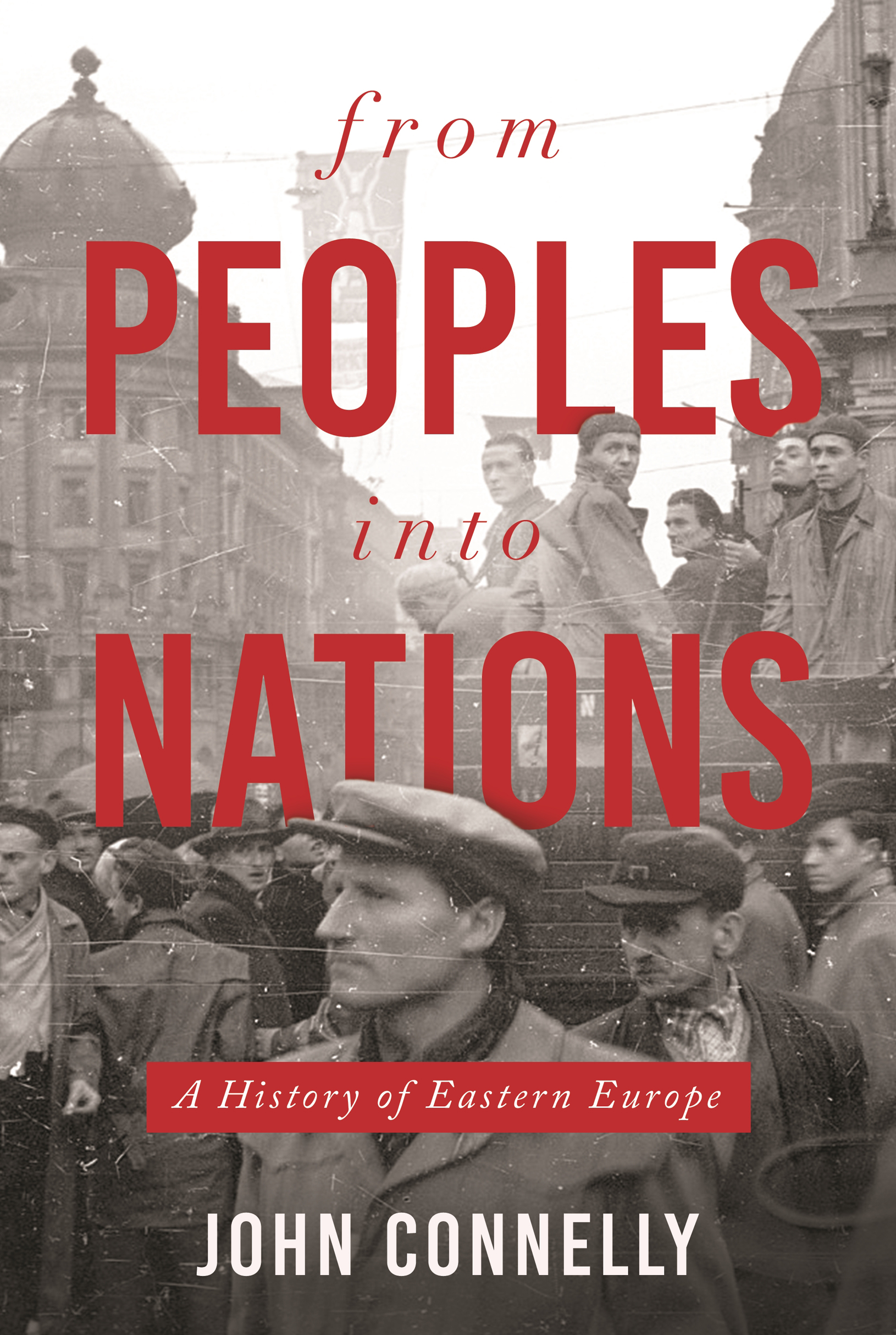from
PEOPLES
into
NATIONS
from
PEOPLES
into
NATIONS
A History of Eastern Europe
JOHN CONNELLY
PRINCETON UNIVERSITY PRESS
PRINCETON & OXFORD
Copyright 2020 by Princeton University Press
Requests for permission to reproduce material from this work should be sent to
Published by Princeton University Press
41 William Street, Princeton, New Jersey 08540
6 Oxford Street, Woodstock, Oxfordshire OX20 1TR
press.princeton.edu
All Rights Reserved
ISBN (e-book) 9780691189185
Version 1.0
Library of Congress Cataloging-in-Publication Data
Names: Connelly, John, author.
Title: From peoples into nations : a history of Eastern Europe / John Connelly.
Description: Princeton : Princeton University Press, [2020] | Includes bibliographical references and index.
Identifiers: LCCN 2019021312 | ISBN 9780691167121 (hardback)
Subjects: LCSH: NationalismEurope, EasternHistory. | Europe, EasternHistory. | Europe, EasternHistoryAutonomy and independence movements. | Europe, EasternPolitics and government.
Classification: LCC DJK38 .C64 2020 | DDC 943.7dc23
LC record available at https://lccn.loc.gov/2019021312
British Library Cataloging-in-Publication Data is available
Editorial: Eric Crahan, Thalia Leaf, and Pamela Weidman
Production Editorial: Nathan Carr
Jacket/Cover Credit: Blaha Lujza Square, Budapest, 1956
To Nico, Irena, and Charlotte
CONTENTS
from
PEOPLES
into
NATIONS
Introduction
War broke out in Europe in 1914 because of a deed carried out in the name of a people no one had previously heard of.
That June, after years of internecine turmoil and armed conflict in southeastern Europe, a Bosnian Serb named Gavrilo Princip shot and killed Franz Ferdinand, heir to the Habsburg throne, in Sarajevo. The assassin said he was acting to defend the interests of the Yugoslavs, or South Slavs, who were seeking independence from the Austro-Hungarian monarchy.
The ensuing conflict was not only Great but also total, with states, economies, and armies aiming to organize themselves and destroy one another in ever more effective ways. When the war ended in 1918, statesmen and revolutionary activists made a new Europe, drawing on the impulse that had taken hold of Gavrilo Princip and his friends: that peoples should govern themselves. Clothed in the words national self-determination, this impulse was raised as a high political standard by both Bolshevik leader Vladimir I. Lenin and US President Woodrow Wilson, denoting socialism for the first, liberal democracy for the second.
The United States now got into the business of democratization, but it also fostered the first stages in Eurasia of decolonization, replacing imperial states like Austria-Hungary and the Ottoman Empire with dozens of supposed nation-states, several of which, like Czechoslovakia and Princips Yugoslavia, constituted revolutionary acts on the old map of Europe. Yet democratization turned out to be trickier than anyone imagined, and during the Depression of the early 1930s, words emerged to describe new movements led by haters of democracy: fascism, corporatism, Nazism, totalitarianism.
Late in the decade, Nazi aggression exploded into war on Czechoslovakia and Poland and began spawning more new vocabulary, some of which made its way into English (for example, blitzkrieg). Specialists know about the Nazi plan to resettle Eastern Europe with Germans and create an imperial space extending to Moscow and the Crimea, the infamous Generalplan Ost, and most grade school graduates know translations directly from the German for crimes committed along the way: final solution, ethnic cleansing. The word genocide was originally formulated in Polish (ludobjstwo) to denote the new crime of massacring an entire people.
At wars end, the disruption continued, with population exchanges and resettlements of displaced persons, phrases no one alive in 1914 would have understood. New regimes arose called peoples democracies, featuring dictatorships of the proletariat that used five-year plans to end the uncertainties of capitalism. A new age had supposedly emerged of human equality. Yet roughly since 1947, this period in which millions suffered deprivations, internal surveillance, and prison camps, has been called the Cold War, a time when the world divided into two hostile camps and seemed to stand on the verge of real war.
In 1953 Joseph Stalin died, and a system named after him plunged into crisis. Young reform Communists sent the clock forward by going backward. They dusted off ideas from eighteenth-century liberal philosophy, like division of powers and the rights to vote and assemble and speak, and they attempted to implement them in a process known as the Prague Spring of 1968. Yet in the miserable summer that followed, Soviet tanks restored Communist orthodoxy, and Soviet leader Leonid Brezhnev announced an eponymous doctrine, according to which socialism could lead only to Communism, and any reform toward pluralism would trigger fraternal assistance by the socialist community of states.
Because both the North Atlantic Treaty Organization (NATO) and the Warsaw Pact believed the intervention had stabilized Soviet rule in Eastern Europe, the two sides negotiated measures to reduce the dangers of armed conflict during the era of dtente. At the 1975 Helsinki Conference, they reaffirmed their commitment to a principle enunciated soon after World War II: human rights. Yet just two years later, Communist authorities in Prague arrested a rock band called Plastic People of the Universe solely because they did not like its message. That caused Czech dissident intellectuals, mostly former Communists, to remind the regime of the accord it had just signed. The document they circulated became known as Charter 77. One of them, the playwright Vclav Havel, also coined an ideal for citizens faced with pressures of self-censorship that would have caused people in 1914 to scratch their heads: living in truth.
Historians explored everyday life under Communism more directly after 1989, when Brezhnevs doctrine was scrapped, along with an edifice dividing Germanys former capital called the Berlin Wall, except for a half-kilometer strip meant to edify tourists. The supposedly evident bankruptcy of this repressive system caused some to talk of an end of history, because all countries were destined for free-market liberalism.
Now Eastern Europe was connected not only to its own interrupted history but also to the West. As after World War I, ideas and advisors made landfall, often not knowing anything about the region and its complexities, including native traditions of rights and democracy. This was a second wave of democratization, but like the first, it did not turn out as planned, spawning a batch of neologisms: Srebrenica, neopopulism, neoliberalism, and illiberal democracy, the last coined by Hungarys Viktor Orbn, an erstwhile grave digger of Communist authoritarianism who rescued himself from oblivion in democracys free for all by becoming a nationalist authoritarian.
What unites this dramatic and unsettling history is a band of countries that runs from the Baltic Sea down to the Adriatic and Black Seas, between the much larger, historically imperial Russia and Turkey in the east, and Prussian and Austrian Germany in the west. These small countries constitute East Central Europe, a space where more of the twentieth century happenedfor good and for badthan anywhere else on the planet.


